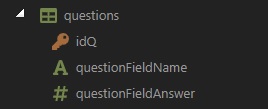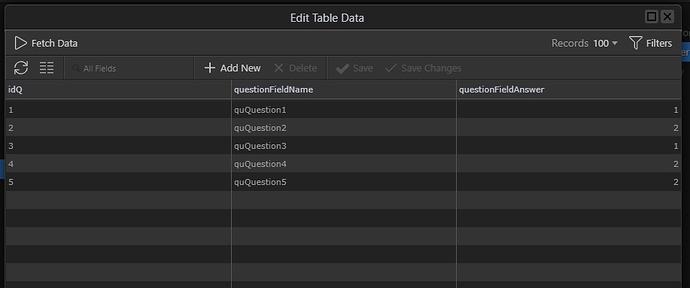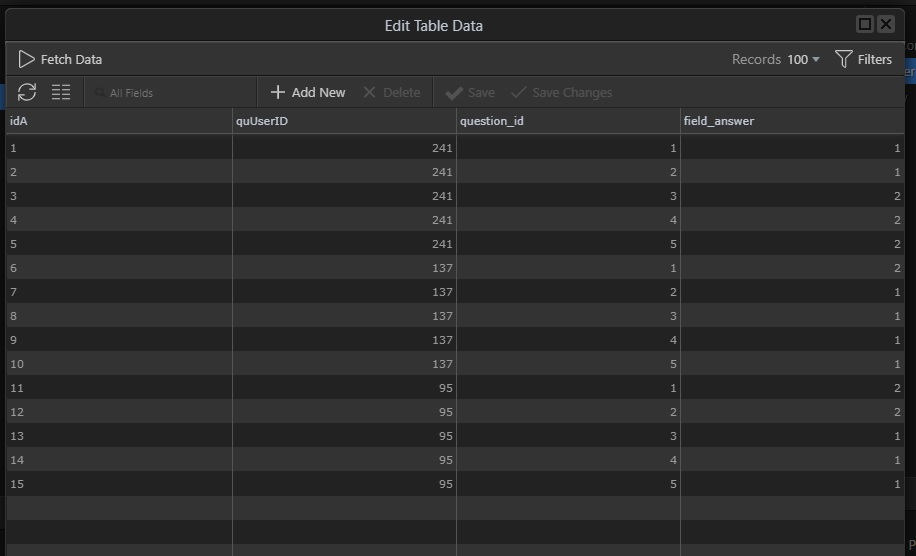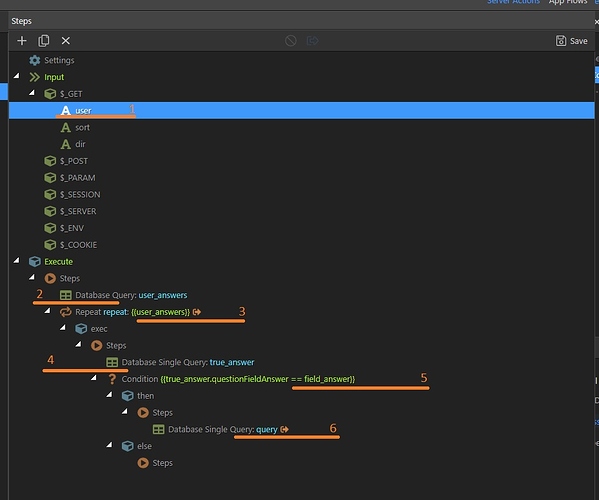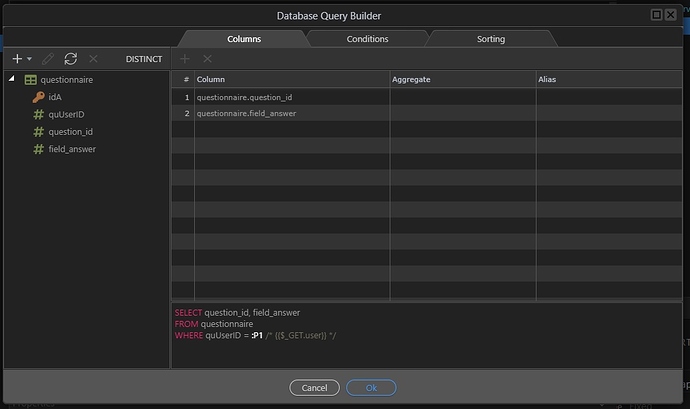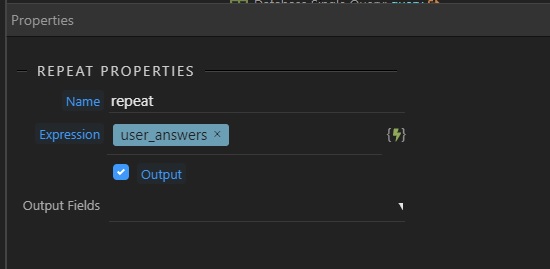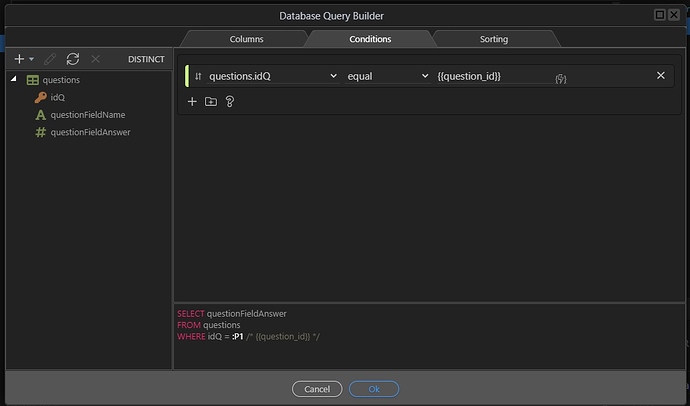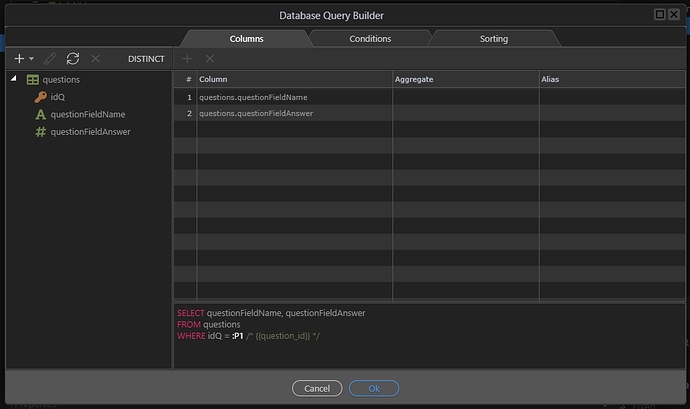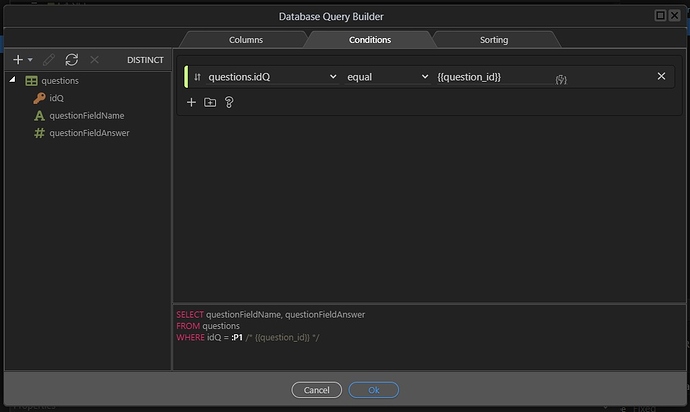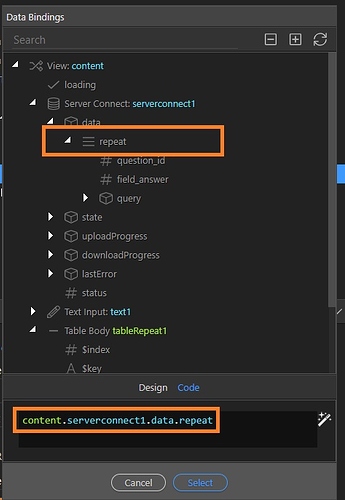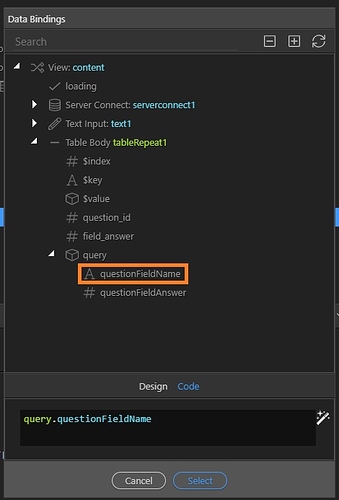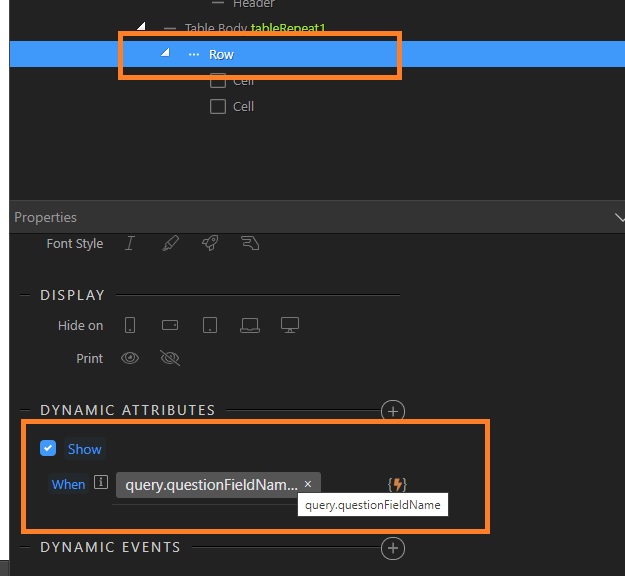Sorry for the slightly strange subject. I’m after some advice.
I have a table containing lots of fields. And have another table which contains further information on those fields. So the first table might have 20 fields in it, the second table will have 20 records with one of the fields containing the field name from the first table. I hope I’ve explained that well enough.
I have a repeat which cycles through those 20 records and I want to set it to show or not show depending on the value of the field in the first table where the record matches it.
Can this be done? If so, what’s the typical method for doing this? Do I need to hand-code or does the Wappler UI accommodate such a technique?
Many thanks.
Jon

